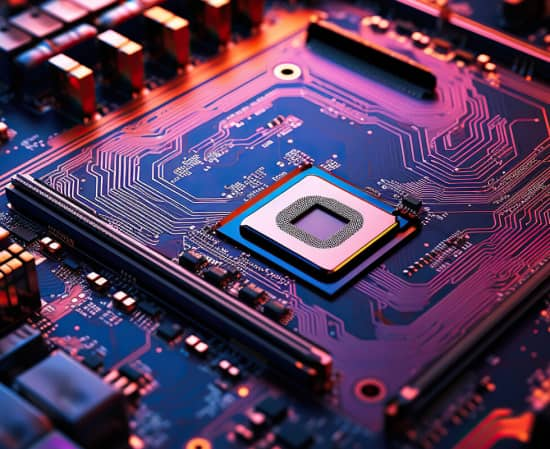How Much Do You Know About Embedded Services?
How Much Do You Know About Embedded Services?
Blog Article
Advanced Semiconductor Design and IoT Solutions with Expert Design Verification Services

The semiconductor industry has actually constantly been at the leading edge of technological development, driving the development of modern-day electronic devices, automation, and interaction systems. As the need for quicker, more effective, and versatile devices grows, semiconductor design and its associated processes, such as SoC design, ASIC design, and embedded services, are gaining prominence. Business concentrating on these locations, like those offering services detailed on the Vaaluka Solutions platform, are essential to shaping the future of technology.
Semiconductor Design: Pioneering Innovation
Semiconductor design forms the foundation of modern-day electronic gadgets. The process involves developing integrated circuits (ICs) that work as the important building blocks for microprocessors, memory chips, and other electronic components. Advanced design methods have actually paved the way for smaller, more effective devices capable of fulfilling the needs of contemporary applications, from consumer electronic devices to industrial automation.
Specialists in semiconductor design use cutting-edge tools and approaches to ensure accuracy and efficiency. This process incorporates different stages, consisting of front-end design, RTL coding, and back-end design, culminating in the production of robust and high-performing ICs.
Design Verification: Ensuring Accuracy and Functionality
Design verification is a vital step in the semiconductor development procedure, guaranteeing that the design performs as planned before manufacturing starts. This stage involves strenuous testing and simulation to identify and correct errors early in the design cycle. Reliable design verification reduces the threat of expensive post-production repairs, improving overall job efficiency.
Advanced tools and strategies, such as formal verification, simulation-based verification, and emulation, are utilized to validate complicated SoC and ASIC styles. Companies skilled in design verification deliver error-free styles that meet rigid performance requirements, ensuring dependability throughout diverse applications.
SoC Verification and Design: The Heart of Integration
System-on-Chip (SoC) verification and design represent an advanced approach in semiconductor advancement. By integrating several functions onto a single chip, SoC innovation offers exceptional efficiency, power optimization, and performance. These qualities make SoC an ideal option for applications varying from smartphones to sophisticated IoT gadgets.
SoC verification ensures that these complex styles meet functional requirements. This involves confirming performance, power consumption, and timing to guarantee optimum efficiency. The process demands a mix of expertise, advanced verification approaches, and a deep understanding of system requirements.
ASIC Design: Tailored Solutions for Unique Challenges
Application-Specific Integrated Circuits (ASICs) are custom-made chips customized for specific applications, offering unrivaled efficiency and performance. ASIC design includes developing bespoke solutions that satisfy the special requirements of markets such as healthcare, automobile, and telecoms.
The procedure of ASIC design encompasses architectural planning, circuit design, and physical design. By concentrating on application-specific requirements, ASIC design provides highly optimized solutions that drive innovation across different sectors. Competence in this area makes sure smooth integration and remarkable performance in real-world applications.
Embedded Services: Bridging Hardware and Software
Embedded services play a critical function in linking software and hardware, making it possible for smooth interaction and operation in modern gadgets. These services encompass firmware development, driver integration, and real-time operating system implementation, ensuring the optimal functionality of embedded systems.
The growing adoption of embedded systems in industries like automotive, consumer electronic devices, and health care highlights the value of trusted embedded services. Business with a strong grip in this domain offer detailed solutions that improve device capabilities and performance.
FPGA Solutions: Flexibility in Design
Field Programmable Gate Arrays (FPGAs) offer unparalleled versatility in design, permitting real-time reprogramming and adjustment. These programmable chips are commonly used in applications requiring high-speed data processing, signal control, and quick prototyping.
FPGA solutions are necessary for markets such as aerospace, telecommunications, and defense, where adaptability and performance are vital. Know-how in FPGA design makes sure the development of efficient, scalable, and robust solutions tailored to particular requirements.
IoT Solutions: Connecting the World
The Internet of Things (IoT) has transformed how devices connect and interact, transforming daily things into intelligent, interconnected systems. IoT solutions involve incorporating sensors, microprocessors, and communication modules to make it possible for real-time information collection, analysis, and automation.
Effective IoT solutions need a multidisciplinary method, combining expertise in semiconductor design, embedded systems, and interaction technologies. These solutions empower markets to improve efficiency, lower expenses, and improve decision-making procedures through data-driven insights.
Microprocessors: Driving Digital Innovation
Microprocessors are the engines driving contemporary computing and electronic gadgets. These complex chips handle intricate computations, control systems, and information processing, allowing a wide variety of applications from smart devices to industrial equipment.
Designing microprocessors needs precision and know-how, concentrating on efficiency, power effectiveness, and scalability. Developments in microprocessor design continue to push the borders of what is possible, helping with improvements in AI, machine learning, and IoT innovations.
Physical Design and Static Timing Analysis (STA): Ensuring Precision
Physical design and fixed timing analysis (STA) are crucial elements of semiconductor development, making sure that chips meet physical restrictions and timing requirements. Physical design includes producing the physical design of the chip, optimizing placement and routing to decrease delays and power usage.
STA concentrates on confirming the timing of signals within the chip, making sure that all components operate synchronously. Know-how in these areas guarantees the production of trusted, high-performance chips capable of satisfying the needs of modern applications.
Conclusion: Empowering Innovation Through Expertise
The semiconductor industry grows on innovation, precision, and competence. Business like Vaaluka Solutions, with their comprehensive offerings in semiconductor design, design verification, SoC design, ASIC design, embedded services, FPGA solutions, and Embedded Services IoT integration, are essential to advancing innovation and shaping the future.
Their proficiency in microprocessors, physical design, and fixed timing analysis makes sure the creation of high-quality, efficient solutions customized to the special requirements of diverse industries. As the demand for smarter, quicker, and more effective gadgets continues to grow, such specialized services are essential for driving progress and enabling transformative technologies. Report this page